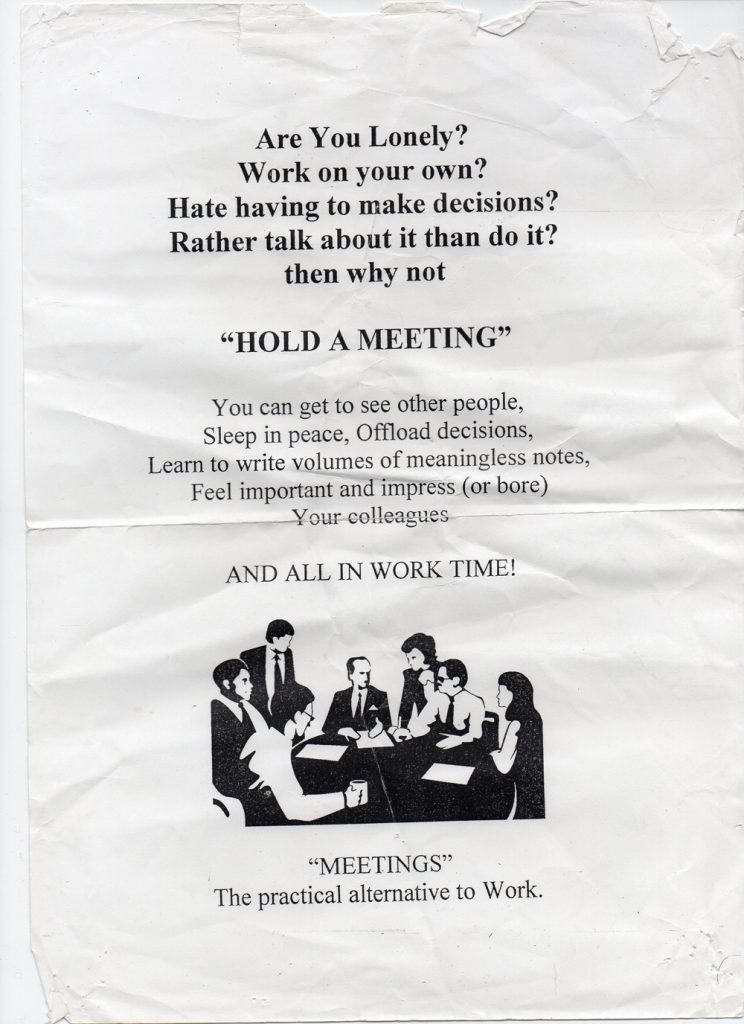
There was much coverage this week of a survey into the number of hours UK office workers spend in meetings (the survey itself was a great piece of PR from Moo).
The Times was quick to call the 26 working days we each cumulatively spend in meetings every year as “an epidemic” – presumably ignoring the high probability that their newsroom has at least a couple of meetings a day.
That aside, meetings are undoubtedly a cause of frustration. They’re fetishized in many organisations, being seen as an end in themselves rather than a tool for getting stuff done. So we thought we’d share approaches to meetings that we’ve seen in clients’ organisations, and that we’ve loved.
Treat meetings like trains
We had a Zurich-based client that treated meetings like trains. This meant that if your meeting was at 10am, you did not turn up at 10am to join it. You turned up at 9.55am at the very latest and waited for the door to open. If you turned up on or after 10am, you had missed the meeting, could not contribute to it, and decisions would be made in your absence.
Build in preparation time
We love this one. Each meeting starts half an hour before the stated time – so a 10am meeting starts at 9.30am. You must be there at 9.30am, because this gives you some time to read any background materials – at the same table as everyone else is reading through background materials. It means you can ask for clarification before the meeting starts and also that decisions are made by people who are up-to-date. Meetings with this client are efficient and quick.
Meeting triage
What is the purpose of your meeting? Is it really a working session/workshop? Or is it a weekly get-together? Or a progress and planning session? We’ve worked with a client where the purpose of a meeting dictates what kind of space you can book for it. It’s a great idea because it means a) everyone knows what they’re meeting for, b) the space is appropriate and c) you’re more likely to be prepared.
Speak only when the light is on
This approach works best for committee and board meetings. We’ve seen it in some local authorities where council committee members can only speak when the light on their desk is lit. It keeps discourse civil, it prevents people being talked over and it makes sure everyone gets a chance to have a say. And because the light’s only on for a few minutes at a time, it makes speakers focus and prepare.
Huddles
A great favourite in the retail world, a huddle is a quick get-together to share important information for the day. Do we have any promotions in store today? Is anyone off sick? The meetings take a maximum of 15 minutes, with everyone standing. There’s no reason that a huddle approach couldn’t be applied to some progress and planning meetings – and it could certainly be applied to the start-the-week get-togethers that can take ages, and for which many are unprepared.
If you’ve come across any other great meeting ideas, please do share.

